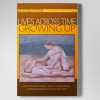Book Review of Reflective Network Therapy in the Preschool Years By Gilbert Kliman (Elissa Burian, Contributing Editor). UPA PRESS, 2011, Reviewed by By Nathan Szajnberg, MD, Managing Editor.
Finally, a psychoanalyst publishes something substantive about working with very severely disturbed preschool children. After the French psychoanalytic embarrassment revealed in the recent documentary on autism treatment in France ( Click here to read What Autism Can Teach Us About Psychoanalysis on this website) we need some credibility in our professions. This book gives us credibility.
Forty-five years of work with hundreds of children is trundled into this 376 page book. Once called the Cornerstone method, it now is Reflective Network Therapy, but the method remains fundamentally the same. An analyst works within a classroom setting, conducting sessions during the class and in the class (often getting ‘input’ from other children); meeting with the teacher before and afterwards; and meeting with parents. This is working the front lines.
I review this work at an advantage over most readers, as I have visited this preschool setting, watched Gil Kliman work with the children, the teachers and meet with the parents. Yet, much of the work will seem familiar to analysts: the intense, yet evenly-hovering presence with the child, even amidst the sometimes disorganizing chaos of a special education classroom of children. There appears to be a halo of concentrated attention, even as the analyst lies on the floor, facing a withdrawn child under a table or in a corner, or one banging the oversized Lego blocks. It is a portrait both dedicated and humbling.
The first section covers the components and history of Reflective Network Therapy (RNT): in-classroom, individual treatment several times weekly; close collaboration with teachers weekly consultation with the parents. Begun in the 1960’s with Marianne Kris’s supervision at the New York Psychoanalytic Institute, the technique was studied with support from the Foundation for Research in Preventive Psychiatry (including Solnit, Neubauer and others). Kliman’s aim from the beginning was to assess the impact of this approach across diagnoses, including its cost and document its benefits. This is unusual for a psychoanalytic enterprise. He documents a series of studies including comparison and control groups and outcome measures. Among other findings, several studies have shown an increase in I.Q. averaging 24 points. And the improvements (in IQ and other emotional measures) are dose-related: children seen four times weekly benefit more than those seen twice weekly.
Next, in addition to case histories, we have a first-person account of a formerly autistic child writing four decades after her first three-year-old meeting with Dr. Kliman. This woman’s articulate account of how she “thought” in pictures (and still does) takes its place with Temple Grandin’s moving narratives of her accommodations to her autism or the law professor, Evelyn Saks’ account of her schizophrenia and how intensive psychoanalytic psychotherapy has kept her emotionally alive. We need more such accounts from the former patients. Books such as August (allegedly fiction), or The Words to Say It, or the Pelican and After should become core texts for those of us in the field and more so for the public. These books are descendants of the medieval Malleus Maleficarum; intended as a guide for the courts on how witchcraft and witches exist, it is for us today a guide to how schizophrenic-like thinking was recorded — and criminalized — in that time.
Kliman recounts how this technique seems beneficial for a range of diagnoses, which while varied in DSM terms, share qualities such as disordered thinking, profound anxiety, poor self representations, difficulty to love (and be loved in return) and disruptive behaviors. He compares the cost and outcome of the RNT approach to many others such as Lovaas’s behavioral approach (with a 40% success rate in improving IQ) or intensive individual therapy with children pulled-out of the classroom. Fonagy and Target’s honest and forthright account of the analyses of children at Hempsted showed whom psychoanalytic treatment helped and whom it didn’t (such as these kinds of children)
Kliman closes the book with a panoramic sweep of neurobiological studies to speculate about what ails these children and how various treatment approaches aid them. I leave the neuroscience for others more qualified to parse. But, we should appreciate that a psychoanalyst is willing to give an overview and to place his work in the context of evolving neuroscience.
This book takes us into the classroom with some of the most damaged children we have in our society. The book is for psychoanalysts who want to move our thinking into the frontiers of children’s lives. But, it is also a book that should be read by those making policy, by those in education and very much by parents who are desperate for a humane approach to helping their children.



